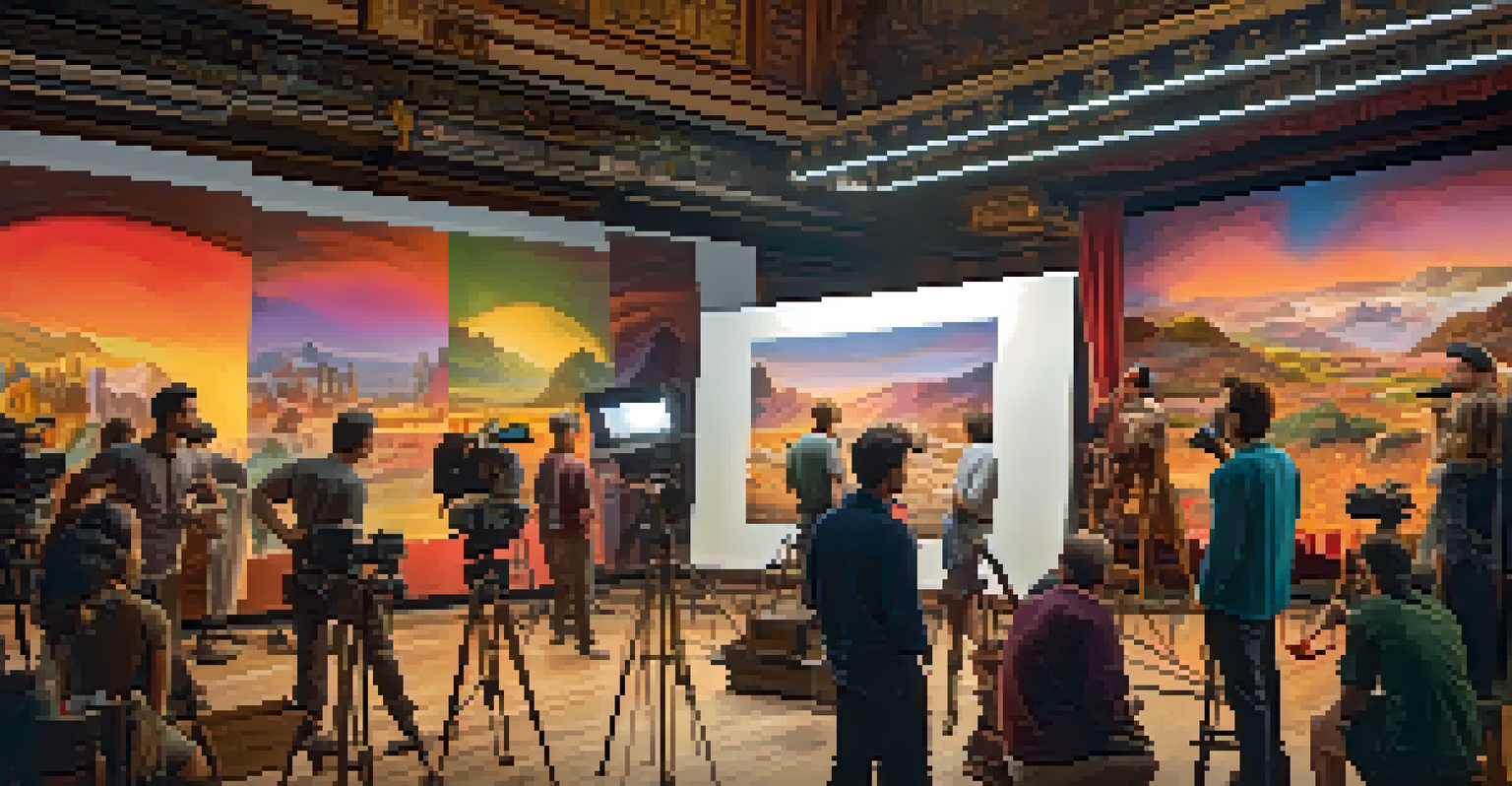Adapting Literature: Screenwriters' Role in Film Adaptations

Understanding the Screenwriter's Role in Adaptations
Screenwriters are the architects of film adaptations, transforming written narratives into visual storytelling. Their role involves more than just transcribing text; they must distill the essence of the original work while making it suitable for the screen. This process often requires a deep understanding of both the source material and the cinematic medium.
Adapting a beloved piece of literature often comes with immense pressure to stay true to the source material.
Adapting literature is not a straightforward task. Screenwriters must consider pacing, character development, and visual elements that are unique to film. For instance, a book may delve into a character's inner thoughts, but in film, these thoughts must be conveyed through dialogue, action, or visual cues.
Ultimately, the screenwriter serves as a bridge between the original literary work and the film audience. They must ensure that the adaptation resonates with viewers, capturing the heart of the story while embracing the nuances of film as an art form.
The Challenges of Condensing Complex Narratives
One of the most significant challenges faced by screenwriters is condensing complex narratives into a manageable runtime. Novels often have rich subplots and detailed character backgrounds that may not fit into a two-hour film. This requires careful selection of what to include, often leading to difficult decisions about which elements to cut or alter.

For example, when adapting a sprawling epic like 'The Lord of the Rings,' screenwriters had to streamline numerous characters and plotlines while maintaining the story's core themes. This balancing act is crucial; leaving out key scenes can risk losing the narrative's emotional weight.
Screenwriters Adapt Literature Creatively
Screenwriters transform written narratives into visual storytelling, requiring a deep understanding of both the source material and the cinematic medium.
Moreover, adaptations must also cater to diverse audiences. Screenwriters must find a way to make the material accessible while still honoring the original work's complexity. This delicate balance is essential for creating a successful adaptation that resonates with both fans of the book and new viewers.
Staying True to the Source Material
Adapting a beloved piece of literature often comes with immense pressure to stay true to the source material. Fans of the original work have their expectations, and screenwriters must navigate these waters with care. Maintaining the spirit of the story while making necessary changes can be a tricky endeavor.
Collaboration fosters an environment where ideas can be exchanged and refined.
Take, for instance, the adaptation of 'Harry Potter.' The films succeeded by staying faithful to the core narrative and character essence while making adjustments to fit the film format. This commitment to the original story helped to create a loyal fan base that embraced the adaptations.
However, fidelity to the source does not mean a verbatim translation. Screenwriters often take creative liberties to enhance the story's visual appeal or to clarify plot points that may be ambiguous in the book. Striking this balance is critical to crafting a compelling film adaptation.
Character Development in Film Adaptations
Character development is another vital aspect for screenwriters when adapting literature to film. Unlike novels, where there is ample space to explore a character’s psyche, films must convey this development more succinctly. Screenwriters often rely on visual storytelling and dialogue to achieve this.
For instance, in the film adaptation of 'The Great Gatsby,' the screenwriter had to capture Gatsby’s complexities through carefully crafted scenes and interactions. Each character's motivations must be clear and engaging within a limited timeframe, requiring writers to focus on pivotal moments that reveal character depth.
Balancing Fidelity and Innovation
Successful adaptations strike a balance between staying true to the original work and making creative changes to enhance the film's visual appeal.
This challenge can lead to changes in character arcs or even the introduction of new characters that enhance the narrative. While this may upset purists, it often results in a richer viewing experience that resonates well with the audience.
Translating Themes from Page to Screen
Themes often serve as the backbone of literary works, and translating them to film is crucial for a successful adaptation. Screenwriters must identify the central themes of the book and find creative ways to represent them visually. This process can involve reimagining scenes or even altering dialogue to ensure that the themes resonate with the audience.
For example, in the adaptation of 'To Kill a Mockingbird,' the theme of racial injustice was powerfully depicted through visual storytelling, emphasizing key moments that highlighted societal issues. This not only honored the original work but also made the themes accessible to a wider audience.
By focusing on visual metaphors and symbols, screenwriters can effectively convey the themes that made the original literature impactful. This ability to translate themes from page to screen is what often distinguishes a mediocre adaptation from a remarkable one.
The Importance of Collaboration in Adaptations
Collaboration plays a significant role in the adaptation process. Screenwriters often work alongside directors, producers, and sometimes even the original authors to ensure that the adaptation aligns with their vision. This teamwork can lead to more nuanced storytelling and a deeper understanding of the source material.
Consider the collaboration involved in adapting 'The Shining.' The screenwriter, along with the director, took creative liberties that diverged from Stephen King's novel, resulting in a unique interpretation that became a classic. While this approach can spark debate among fans, it showcases the potential benefits of collaborative adaptation.
Collaboration Enhances Adaptations
Collaboration among screenwriters, directors, and producers fosters nuanced storytelling and leads to innovative interpretations of the source material.
Ultimately, collaboration fosters an environment where ideas can be exchanged and refined. This synergy can lead to innovative storytelling solutions, making the adaptation process not just a task but an artistic endeavor.
The Impact of Audience Expectations on Adaptations
Audience expectations play a crucial role in how screenwriters approach adaptations. Fans of the original literature often have strong emotional attachments to characters and storylines, which can influence the adaptation process. Screenwriters must consider these expectations while still delivering a fresh and engaging cinematic experience.
For example, the adaptation of 'Pride and Prejudice' has seen various interpretations over the years, each catering to different audience expectations. Some adaptations focus on the romance, while others emphasize social commentary, showcasing how audience preferences can shape the narrative direction.

Balancing audience expectations with creative expression is a tightrope walk for screenwriters. The challenge lies in creating a film that resonates with both die-hard fans and newcomers, ensuring that the adaptation feels both authentic and innovative.